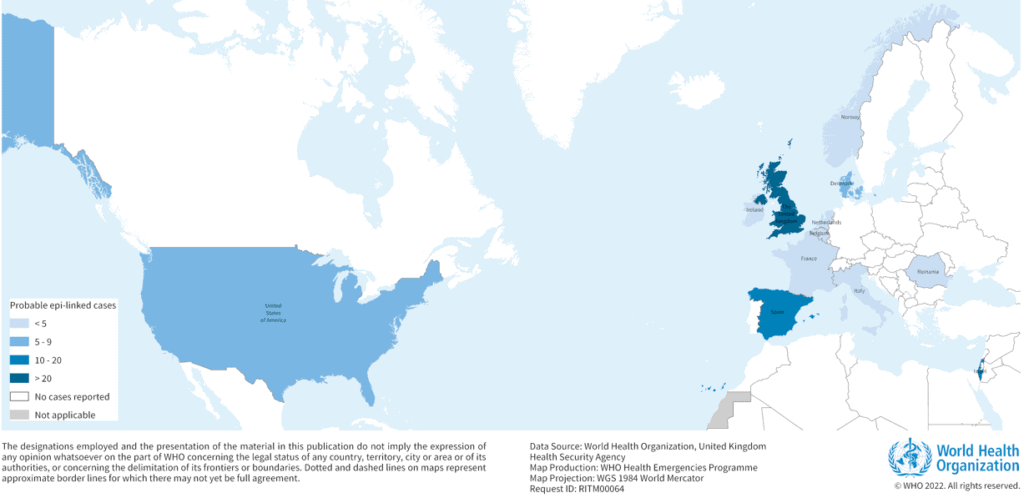Over 200 cases of hepatitis in children have been reported around the world. This is far higher than the normal rate, and none of the usual culprits seem to be to blame. Here’s what we know about this so far.

When and why did it start
The first cases were reported in early 2022 in the UK. Already, over 100 cases have been reported in the country, and the cases have spread to Spain, France, Denmark, the US, Norway, Belgium, Italy, Netherlands, Japan, and Israel. Most countries other than the UK have only reported a handful of cases, but if what we’ve seen so far is an indication, there’s a good likelihood the number of cases will increase.
Sometimes, hepatitis has no known cause. There’s always been a background level of severe hepatitis in young children as well, Will Irving, professor of virology at the University of Nottingham, told the BMJ. But this is very different and much worse.
“Normally a paediatric haematologist in, say, Birmingham, at one of the big UK centres, might see one or two cases a month. For many years we’ve wondered whether there was another virus that’s causing non-A-E hepatitis. There’s always a background level there, but now Birmingham, for example, has seen 40 cases in three months.”
As Irving explained, what makes this even more puzzling is that the children aren’t testing positive for the viruses that normally cause hepatitis (hepatitis viruses A, B, C, D, and E).
What’s causing it
The simple answer is “we don’t know yet”.
The leading piece of evidence doctors have so far is an adenovirus — adenovirus type 41. According to preliminary surveys, many of the children suffering from this unusual type of hepatitis test positive for adenovirus 41, which can cause gastroenteritis, especially in children.
But adenovirus 41 alone shouldn’t cause this much trouble. We’ve seen it in action before, and it has not been linked to anything like this. So instead, the UK Health Security Agency said it believes there may be a cofactor increasing the severity of the cases. They list a coinfection (potentially with SARS-CoV-2), a toxin, or an environmental factor as the potential causes.
Of course, this doesn’t yet rule out the possibility of a yet-unknown pathogen being responsible for the surge in cases. Researchers are actively analyzing all options. Data from Scotland and the US shows no discernible pattern between cases so far. There isn’t any link to COVID-19 vaccinations either, since most children had not even been vaccinated.

How bad is it
Most kids have recovered from the disease, but doctors are still shocked by how severe this hepatitis appears to be. According to the WHO, cases seem to appear in children aged 1-16, and 10% of the infected have required a liver transplant; at least one fatality has been reported so far.
Most cases did not have a fever, but some presented severe symptoms. Many experienced fatigue, loss of appetite, as well as gastrointestinal symptoms such as abdominal pain, diarrhea, and vomiting.
Associate Prof Asha Bowen, a clinician at Perth children’s hospital in Australia and an infectious diseases researcher at Telethon Kids Institute said that it’s unusual for children coming to hospitals to present with fulminant hepatitis — meaning their liver is failing and there’s no real treatment other than a transplant.
Staying on alert
Researchers continue analyzing the symptoms and trying to find what’s causing these cases, but in the meantime, the WHO has urged all countries to stay on alert and keep an eye out for this type of symptoms, and for anything that may be responsible for causing this.


